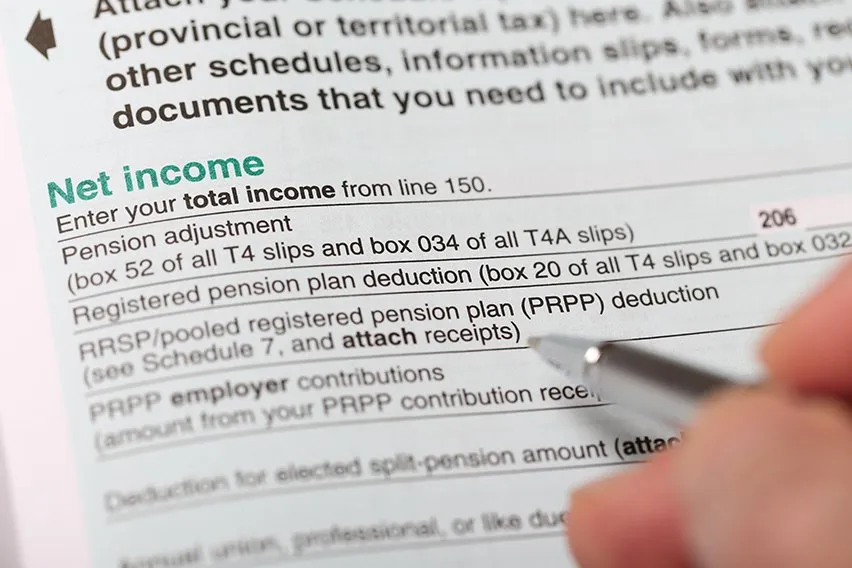How to Calculate Net Income: Examples & Formula

As a small business owner, there are several different processes to keep an eye on and monitor as you grow. You want to increase profit margins and streamline financial metrics. And when it comes to an understanding whether or not your business is profitable, net income is a great way to find out. Do you know if your business is operating at a profit or loss?
By taking into account your total incoming revenues and taking away other expenses, you can see if your business is profitable. And this is an incredibly important metric to measure your long-term success.
So, how do you calculate your net income? Let’s take a closer look at a few examples as well as some formulas you can use to calculate net income yourself.
Here’s What We’ll Cover:
What About Operating Net Income?
What Is Net Income?
Net income can oftentimes get referred to as your net earnings. It’s calculated based on your sales and also takes into account a few other areas. Some of these things can include the cost of goods sold, general and administrative expenses and operating expenses. Your net income might also consider any interest, taxes or other expenses that are applicable.
Your net income is a useful number for investors. They can assess exactly how much revenue exceeds any expenses in your company. Net income will get included on your business’s income statement, and it’s a great indicator of how profitable your business is.
Basically, net income gets calculated as revenues minus any expenses, taxes and interest. Businesses also use net income to help calculate their earnings per sale.

Net Income Formula
To calculate net income for your business, the first thing that you’re going to do is start with your total revenue. From here, you can then subtract any operating costs and business expenses to help calculate your earnings before tax. Then, you can deduct taxes from this amount to figure out your net income.
Net income can get manipulated through hiding expenses or aggressive revenue recognition. As well, net income can be either positive or negative. If your company has more revenue than it does expenses, then you will have a positive net income.
If you have total expenses that are more than your gross revenue, then you are going to have a negative income or a net loss. To help you calculate net income on your income statement, there are a few things for you to do.
First, take every source of revenue that you have and add them together to find your total revenue. Second, make a record of all the expenses that are related to the cost of goods sold. Add them up to find the total cost of sales.
Third, record any other business expenses that you have that aren’t related to the cost of sales. You can then combine and add them together to determine total expenses.
From here, you find net income by adding together the total of all expenses and the total cost of sales. You then subtract that number from the overall revenue of your business.
Total Revenue – (Total Cost of Sales + Total of Other Expenses) = Net Income
There is also a more simplified formula:
Gross Income – Expenses = Net Income
Examples of Net Income
Your personal gross income calculation refers to how much you earn or your pre-tax earnings. Net income takes into account the difference after you factor in deductions and taxes. To calculate taxable income, simply subtract any deductions from your gross income. The difference between your taxable income and your income tax will be your net income.
For example, let’s say you earn $50,000 in gross income each year and you qualify for around $5,000 in allowable deductions. Your taxable income would be equal to $45,000. With a tax rate of 13.88%, you have an income tax payment of $6,246. So, your net income would be equal to $38,754.
$50,000 – $5,000 = $45,000 in taxable income
$45,000 at a tax rate of 13.88% = $6,246
$45,000 – $6,246 = $38,754 Net Income
Let’s take a look at another example.
Jim and Jane’s Pizzeria is looking to figure out their net income for the first quarter.
Here’s a breakdown of their numbers:
- Total revenues: $50,000
- Total cost of goods sold: $10,000
- Rent: $5,000
- Utilities: $1,000
- Payroll: $6,000
- Advertising: $1,000
- Interest expense: $1,000
The first thing that Jim and Jane are going to do is calculate gross income. They do this by taking total revenues and subtracting the total cost of goods sold.
Gross income = $50,000 – $10,000 = $40,000
Next, they are going to add up all the expenses.
Expenses = $5,000 + $1,000 + $6,000 + $1,000 + $1,000 = $14,000
Finally, Jim and Jane can calculate net income by taking the gross income and then subtracting the expenses.
Net income = $40,000 – $14,000 = $26,000
So, Jim and Jane can calculate their net income for the quarter, which ends up being $26,000.
Including Net Income on Your Tax Returns
There are a few things to be aware of when including your net income on your tax returns. To report annual earnings, you will need to submit a version of Form 1040 to the IRS. However, the form doesn’t have a dedicated line for net income.
Instead, there are lines for you to record your gross income, taxable income and adjusted gross income. After you make a note of your gross income, you can then subtract things such as Social Security benefits or student loan interest, which can impact your taxable benefits.
It’s worth noting that while a lot of times net income and adjusted gross income can get used interchangeably, they are different. The difference between your income tax and your taxable income is your net income.
As well, most paychecks or pay stubs will have a dedicated area that highlights net income. And again, it’s the gross income minus any taxes and retirement contributions.

What About Operating Net Income?
You can also do some calculations to figure out your operating net income. This is useful to help you track and monitor your company’s profits. And it doesn’t take into account income or expenses that aren’t related to the core business activities. Some of these things can include interest expense, income tax and gains or losses from selling assets.
Your operating net income can sometimes get referred to as your earnings before interest and taxes. And the good news is that it’s just as simple to find your operating net income as it is to find your net income.
This is the formula for calculating operating net income:
Net Income + Taxes + Interest Expense = Operating Net Income
You could also calculate it this way:
Gross Profit – Depreciation – Operating Expense – Amortization = Operating Net Income
It all depends, but some investors or lenders choose to look at your operating net income instead of your net income. This is because it gives them a little better idea of financial health and how profitable your company is.
For example, if your company sells a valuable piece of machinery, any gain from the sale will get included in your net income. But, if your company has been struggling and losing money for a while, then the gain might make it look as though you’re doing well. Operating net profit helps to take the gain out of consideration so there’s a clearer financial picture for core operations.
Key Takeaways
Figuring out your net income doesn’t have to be a challenge. You just need to have the right information and use the proper formula. It can often get referred to as net earnings, and it’s calculated based on your company’s sales.
Net income includes the cost of goods sold, administrative expenses and operating expenses. Plus, things like certain taxes, interest and other expenses get included.
But, the good news is that calculating net income is incredibly simple to do. However, it’s worth keeping in mind that similar to other accounting measures, net income can get manipulated. This can sometimes happen through hiding expenses or through aggressive revenue recognition.
To calculate net income for your business, you are going to add your expenses to the total cost of sales. Then, you are going to subtract that number from your overall revenue.
It would look something like this:
Net Income = Total Revenue – (Total Cost of Sales + Total of Other Expenses)
It can also be important to distinguish the difference between net income and operating net income. Operating net income refers to your earnings before any interest or taxes get included. It can be a good way for investors or lenders to measure the profitability of your business. But, it doesn’t take into account anything that isn’t related to the core activities of your business operations.
To calculate operating net income, it would look something like this:
Operating Net Income = Net Income + Taxes + Interest Expense
Keep in mind that there isn’t a dedicated line for net income on your federal income taxes. This means you need to record gross income, taxable income and adjusted gross income on Form 1040.
Did you enjoy reading this guide? Head over to our resource hub for more great content!
RELATED ARTICLES

 What Are Pricing Strategies & 8 Common Strategies for Business
What Are Pricing Strategies & 8 Common Strategies for Business Payment Processor: Overview and Top 5 Picks for 2025
Payment Processor: Overview and Top 5 Picks for 2025 What Is Inventory Management? A Guide to Techniques & Methods
What Is Inventory Management? A Guide to Techniques & Methods Credit Vs Debit Card: What’s the Difference?
Credit Vs Debit Card: What’s the Difference? How to Start a Daycare: 12 Simple Steps
How to Start a Daycare: 12 Simple Steps How to Estimate Catering Jobs in Canada: A Pricing Guide for Small Businesses
How to Estimate Catering Jobs in Canada: A Pricing Guide for Small Businesses